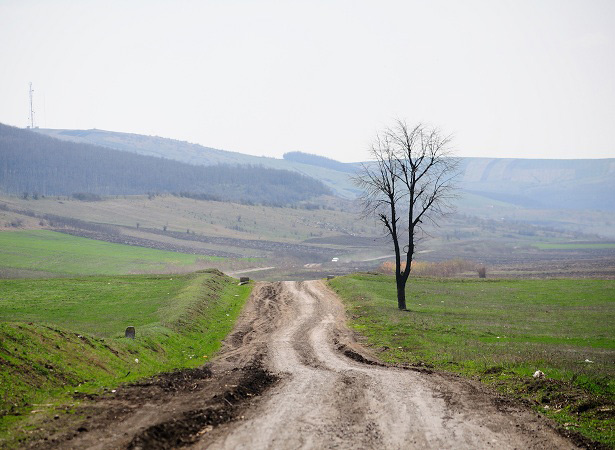 Eventually there may come a day when everyone on the planet has access to the best internet connection speed possible. For now, however, there are still people in highly developed nations (such as, say, the U.S.) who are dealing with dial-up speeds and computers that should have long been obsolete.
This is the reality of technological advancement. Unfortunately, it’s an easy thing to forget for web developers who consider technology a priority.
When you make it a point to find the best possible speeds from your ISP, the latest computer, and state of the art software, it becomes increasingly difficult to imagine that your customers may be using less. In some cases, much less. And this divide can make for some very poor web design choices.
Eventually there may come a day when everyone on the planet has access to the best internet connection speed possible. For now, however, there are still people in highly developed nations (such as, say, the U.S.) who are dealing with dial-up speeds and computers that should have long been obsolete.
This is the reality of technological advancement. Unfortunately, it’s an easy thing to forget for web developers who consider technology a priority.
When you make it a point to find the best possible speeds from your ISP, the latest computer, and state of the art software, it becomes increasingly difficult to imagine that your customers may be using less. In some cases, much less. And this divide can make for some very poor web design choices.
User frustration
According to a 1998 Georgia Tech survey of web users, the biggest problem people had when surfing the internet was speed. In fact, “speed” alone was only below “slow ads” when it came to the largest response percentage. And both of those concepts can be folded into the speed category, as few users are likely to be frustrated because they can’t see their favorite ads in time. Rather, they are frustrated because the page loads the ad before the content, forcing them to wait even longer before getting to the good stuff. While slow loading ads are not nearly as prevalent 14 years later and internet speeds in general have improved a great deal, technology has moved forward as well. It might take a modern computer and decent connection only a fraction of a second to load a Geocities page from 1998. The results, however, may not be that different when you compare apples-with-apples.
Modern design
Modern web design techniques have come a long way from the animated .gifs and sparkly graphics that littered the Web in the mid-90s. While few would argue that today’s internet is not more attractive for the changes, the programs and design choices of today’s web designers are often meant to take advantage of powerful computers and—perhaps more importantly—high speed connections. But look at some of the most popular sites. Facebook. Reddit. Google. These sites are visited by millions a day, are structurally and graphically sound (if not outrageously beautiful), and they get few complaints from users on slow connections. Each of these sites keeps the focus on providing a streamlined service for their users. With design trends already leaning towards minimalism, it shouldn’t be too much of a challenge to go and do the same. Unfortunately, that desire to push technological capabilities just a bit further can sometimes lead to questionable choices.
Increasing user speed
In an analysis of usability and computer speed, the University of Maryland’s Necip Fazil Ayan came up with some recommendations for web designers. Chief among these recommendations was this golden rule: “Make Your Pages As Fast As Possible”. Simple, direct, and as true today as it was in the early days of the internet. To accomplish this goal, Ayan advised a three pronged approach: make your pages load quickly, make them display quickly, and make them easily navigable. But this brings us back to our primary consideration; what is fast and easy to navigate on state of the art satellite internet could very well be a nightmare for someone whose ISP hasn’t gotten around to providing DSL. To make sure your web designs can reach your target audience, you need to know what that audience is. And if your pages are designed for a broad demographic, you still need to develop with the lowest common denominator in mind.The reality of the situation
It is easy to become so entrenched in your surroundings that you forget that not everyone has it so good. Six months after buying your first HDTV, did it seem inconceivable that anyone was still watching a boxy, standard definition television? Never mind the fact that you still had one in your bedroom. If you traded in physical CDs for the convenience of MP3s a long time ago, it may seem improbable that anyone is still buying them. But 2011 was the first year in history that digital sales outdid physical ones in the music industry, and then, only by a hair. There are still a lot of people out there using and buying CDs. Of course, all of this is just to illustrate how the universal adoption of new technology is not always up to speed with the actual rate at which said technology comes out. Perhaps nowhere is this disparity clearer than in the realm of connection speeds.
Here, customers are not only limited by their own budgets, but by what is offered in their area. According to a Speed Matters 2010 report on American Internet speeds, a full 49% of American households were below the FCC’s minimum broadband speed standard, which stood at 4 megabits per second for download rates. While we like to think of the U.S. as the leader (or at least near the top) when it comes to technology and progress, we managed to rank a dismal 25th when it came to average connection speeds when compared with other countries.
Of course, all of this is just to illustrate how the universal adoption of new technology is not always up to speed with the actual rate at which said technology comes out. Perhaps nowhere is this disparity clearer than in the realm of connection speeds.
Here, customers are not only limited by their own budgets, but by what is offered in their area. According to a Speed Matters 2010 report on American Internet speeds, a full 49% of American households were below the FCC’s minimum broadband speed standard, which stood at 4 megabits per second for download rates. While we like to think of the U.S. as the leader (or at least near the top) when it comes to technology and progress, we managed to rank a dismal 25th when it came to average connection speeds when compared with other countries.
Designing to speed
The size of the average website grew seven times larger between 2003 and 2011. This trend continues today, optimizing the browsing experience for those with state of the art, broadband connections, but leaving those on weaker connections left to browse Facebook and do little more. Reach out to these people when you do your website design. If you’re designing a website for those who may still be using 56k modems, a page full of videos, graphics and intense JavaScript isn’t going to fly. These pages may look good in your portfolio, but they are going to cause many users to hit the back button.Compromise
Of course, there are those designers who simply say, “Too bad,” and move on. It’s not up to them, they exclaim, to make sure every hillbilly on an Apple IIc can access their site. For those targeting high end clientele or technologically savvy readers, this may well be an acceptable point of view. However, if you goal is to reach those users in rural America or those in countries where high speed internet is but a dream, you’ll need to temper your excitement for the future. Take an HTML tag down here and there. Remove an image or two. Find a low speed connection and give your website a whirl. You may find that optimization and design can work for both those on satellite internet and those on dusty dial-up modems.Philip J Reed
Philip is a technology and entertainment blogger and always looks forward to reading feedback on his work.
Read Next
3 Essential Design Trends, November 2024
Touchable texture, distinct grids, and two-column designs are some of the most trending website design elements of…
20 Best New Websites, October 2024
Something we’re seeing more and more of is the ‘customizable’ site. Most often, this means a button to swap between…
Exciting New Tools for Designers, October 2024
We’ve got goodies for designers, developers, SEO-ers, content managers, and those of you who wear multiple hats. And,…
15 Best New Fonts, September 2024
Welcome to our roundup of the best new fonts we’ve found on the web in the previous four weeks. In this month’s edition…
By Simon Sterne
3 Essential Design Trends, October 2024
This article is brought to you by Constantino, a renowned company offering premium and affordable website design
You…
A Beginner’s Guide to Using BlueSky for Business Success
In today’s fast-paced digital world, businesses are always on the lookout for new ways to connect with their audience.…
By Louise North
The Importance of Title Tags: Tips and Tricks to Optimize for SEO
When it comes to on-page SEO, there’s one element that plays a pivotal role in both search engine rankings and user…
By Simon Sterne
20 Best New Websites, September 2024
We have a mixed bag for you with both minimalist and maximalist designs, and single pagers alongside much bigger, but…
Exciting New Tools for Designers, September 2024
This time around we are aiming to simplify life, with some light and fast analytics, an all-in-one productivity…
3 Essential Design Trends, September 2024
September's web design trends have a fun, fall feeling ... and we love it. See what's trending in website design this…
Crafting Personalized Experiences with AI
Picture this: You open Netflix, and it’s like the platform just knows what you’re in the mood for. Or maybe you’re…
By Simon Sterne
15 Best New Fonts, August 2024
Welcome to August’s roundup of the best fonts we’ve found over the last few weeks. 2024’s trend for flowing curves and…
By Ben Moss















